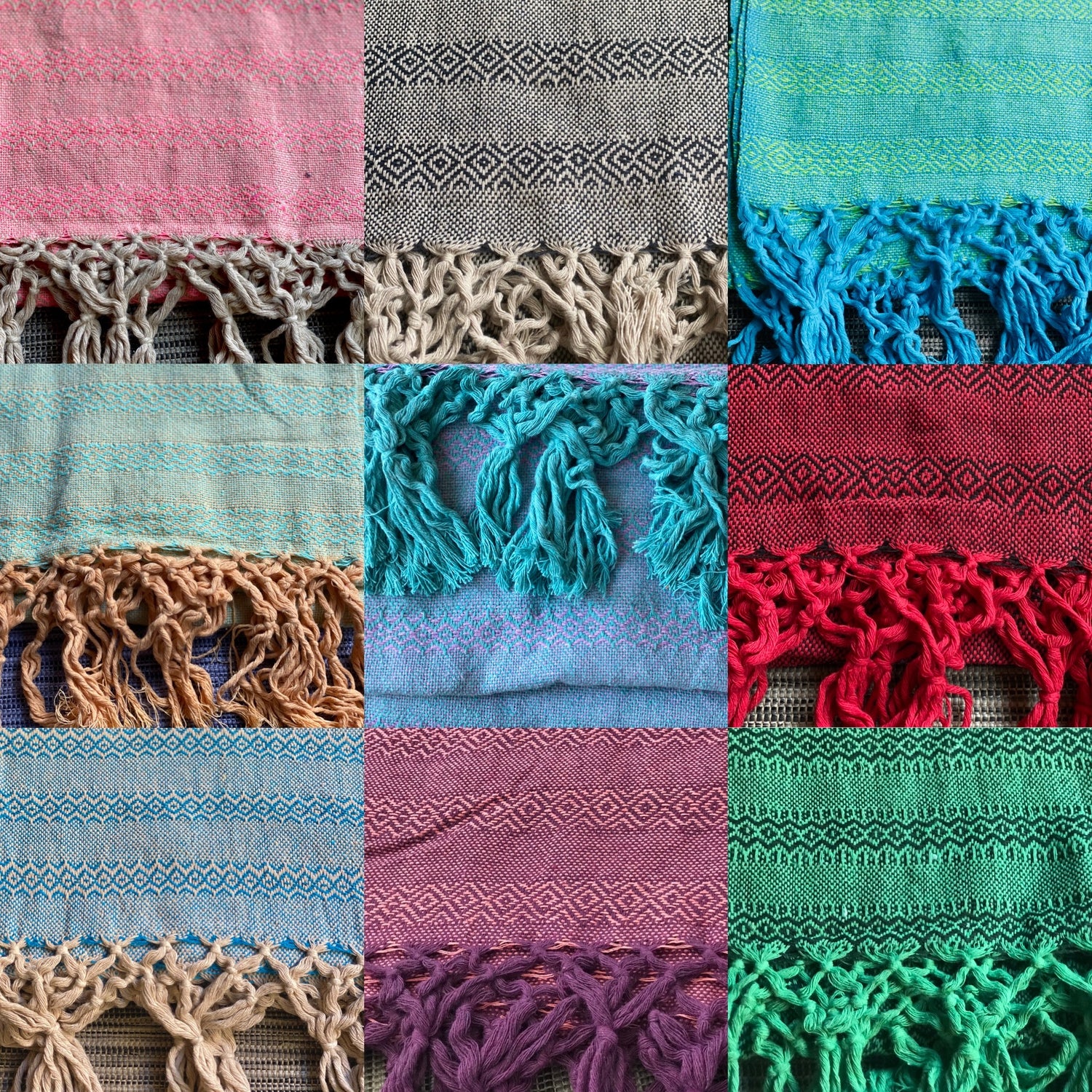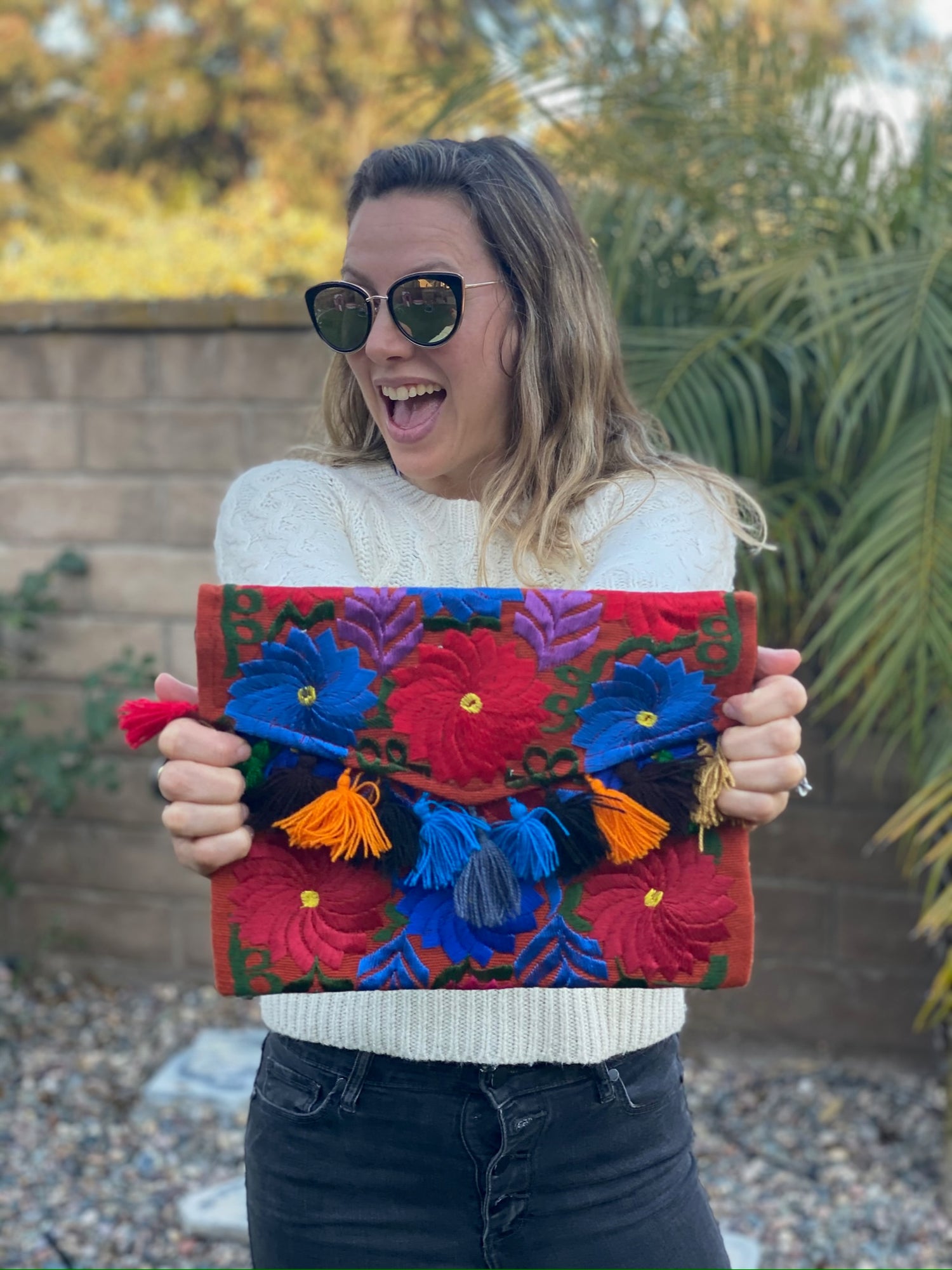The rebozo is much more than a simple shawl; it carries deep cultural meanings and stories within Mexican traditions.
Throughout history, the rebozo has symbolized identity, resilience, and artistry. Often, these are intertwined with myths and legends that enrich its significance.
As you explore the fascinating tales of the rebozo, you will uncover how it has played a vital role in both daily life and ceremonial practices, connecting generations of women across Mexico.

Legends often portray the rebozo as a magical object that protects and brings good fortune, making it an essential part of various folklore. Each stitch and design tells a story, reflecting the community's heart and soul.
By learning about the rebozo, you delve into a world of rich history and cultural pride that continues to resonate today.
This journey into the mysteries of the rebozo will take you through its historical importance, the skilled craftsmanship involved in its creation, and the common questions that arise about this beloved tradition.
Prepare to be captivated as you witness how a simple piece of fabric holds the power of myth and meaning in Mexican culture.
Key Takeaways
- The rebozo represents identity and resilience in Mexican culture.
- Its craftsmanship showcases the artistry passed down through generations.
- Myths surrounding the rebozo highlight its significance in traditions and folklore.
Historical and Cultural Significance of the Rebozo

The rebozo holds deep historical and cultural significance in Mexico. This traditional garment connects various aspects of Mexican identity, weaving together stories from history, legends, and key cultural moments.
Origins and Evolution Through the Ages
The rebozo dates back to indigenous cultures, serving practical and symbolic purposes. Early forms were used by indigenous women for warmth and as functional wraps.
During the Spanish colonial period, the rebozo evolved into a piece of art, integrating European designs with indigenous techniques.
Over time, it became a symbol of Mexican heritage. Notable figures, such as Frida Kahlo and María Félix, wore rebozos, showcasing their beauty and cultural roots. Today, it remains an essential element in traditional clothing, especially during significant events like weddings and childbirth.
Rebozos in the Fabric of Mexican Identity
The rebozo is more than a garment; it represents the diverse tapestry of Mexican identity. It connects indigenous and mestizo women, emphasizing their vital role in maintaining cultural traditions.
For instance, during Mexican Independence Day and the Mexican Revolution, women donned rebozos as a symbol of pride and resistance.
Celebrations often feature rebozos, highlighting their cultural importance. Artists and craftspeople continue to create stunning rebozos that reflect regional styles, ensuring the preservation of traditional weaving techniques. These pieces serve as reminders of Mexico’s rich cultural history.
Symbolism in Myths and Traditional Events
In Mexican myths and legends, the rebozo often appears as a symbol of femininity and strength. It is associated with motherhood and protection, representing women’s roles in nurturing and supporting families.
Stories recount how mothers used rebozos to carry their children, signifying care and connection.
During traditional events, the rebozo adorns weddings and celebrations, linking the past and present. Empress Carlota’s use of the rebozo symbolizes its significance in high society, while the vibrancy of rebozo patterns reflects local customs.
Margarita Zavala, among others, has emphasized the importance of the rebozo in contemporary culture. Its enduring legacy showcases the values and identity of Mexican society.
Artistry and Craftsmanship of the Rebozo

The artistry and craftsmanship behind the rebozo reflect rich traditions passed down through generations. Each piece tells a story through its unique patterns and textures, showcasing the skill of the artisans involved.
Understanding the techniques, materials, and communities behind the rebozo offers insight into its cultural significance.
Weaving Techniques and Regional Varieties
You will find various weaving techniques used to create rebozos, with each region of Mexico showcasing its own style.
In places like Tenancingo, artisans often utilize the backstrap loom, a traditional method that allows for precise control over designs.
Techniques such as handwoven patterns and hand-knotted fringe are hallmarks of expertly crafted rebozos. Regions like Oaxaca and Chiapas are known for their vibrant colors and intricate patterns.
These distinct styles result from local traditions and the unique identity of each community, offering a diversity that makes each rebozo special.
Materials and Design: From Cotton to Silk
The materials used in crafting a rebozo significantly influence its appearance and feel. Commonly, artisans use cotton, which provides strength and comfort. However, more luxurious options like silk and wool are also popular.
Each material carries a different texture and weight, affecting how the garment drapes.
Designs may include a mix of vibrant colors and intricate patterns, tailored to reflect personal or cultural meanings. Artisans often blend rayon with natural fibers to achieve unique aesthetics.
The careful selection of materials plays a crucial role in the rebozo’s quality, making each piece a work of art.
The Artisans and Their Communities
Rebozo artisans are essential to cultural preservation. Many work in small communities such as Santa María de Río, La Piedad, and Uriangato. There, knowledge of traditional weaving techniques is cherished and passed down through families.
Artisans often collaborate and share skills, enriching their craft collectively. Private collections showcase these unique creations, which capture the labor and love embedded in each piece.
The focus on craftsmanship highlights the importance of regional identity, making the rebozo a living symbol of Mexican heritage.
Frequently Asked Questions

The rebozo carries deep cultural meaning in Mexico, featuring in traditions, myths, and personal identity. Its materials, craftsmanship, and historical significance also add layers to its importance over time.
What cultural significance does the rebozo hold in Mexican traditions?
The rebozo is more than just a piece of clothing; it symbolizes identity, resilience, and connection to heritage. Often worn during ceremonies, it serves as a statement of cultural pride and unity among women.
How does the rebozo feature in popular Mexican myths and legends?
In many tales, the rebozo is depicted as a magical item with protective qualities. These stories often emphasize its role in safeguarding the wearer and connecting them to their ancestors, creating a bridge between past and present.
In what ways has the rebozo influenced Mexican identity and folklore?
The rebozo has shaped how Mexicans view themselves and their history. It represents traditional values and the evolution of national identity, often appearing in folk art and literature as a symbol of cultural pride.
What materials and techniques are traditionally used in the crafting of rebozos?
Rebozos are typically made from cotton, silk, or wool, showcasing vibrant colors and intricate designs. Weaving techniques vary by region, with many artisans using handlooms to create unique patterns that reflect local traditions.
Can the rebozo's symbolism be traced through different periods of Mexican history?
Yes, the meaning of the rebozo has evolved through centuries, reflecting changes in society and culture. From pre-Columbian times to modern periods, its symbolism has adapted while remaining rooted in Mexican identity.
How do modern interpretations of the rebozo reflect its mythological and cultural roots?
Today, the rebozo is embraced in fashion and art, representing both tradition and innovation.
Designers often integrate its mythological aspects into new creations, bridging the past with contemporary expression while honoring its rich heritage.




